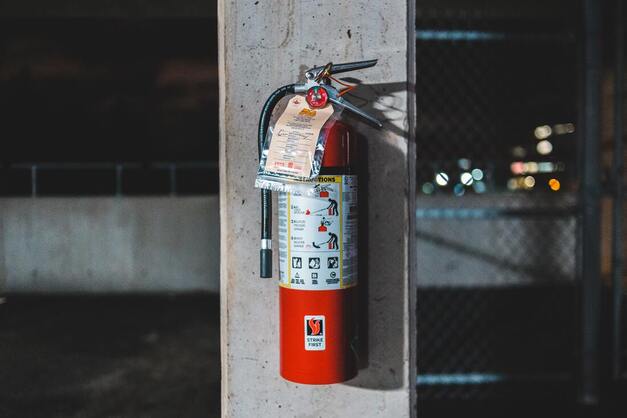|
On average, a fire is reported every 23 seconds in America. When it comes to fire safety, fire extinguishers are the first line of defense to keeping a fire from getting out of control. This blog will help explore where they are needed, the types of fire extinguishers, and how to properly use one in case of an emergency.
Where Fire Extinguishers Are Needed Per NFPA 10 code requirements, fire extinguishers are required in all occupancy types except for one and two family dwellings. When you are required to have an extinguisher, making sure they are accessible and visible are two key factors that can help keep a fire under control. This is why NFPA recommends extinguishers are placed along normal travel pathways that are free of obstructions. Another requirement regarding placement of extinguishers is a maximum travel distance ranging from 30ft-75ft depending on the type of extinguisher and size of the room. Types of Fire Extinguishers There are five types of fire extinguishers, each marked for specific fire hazards that may be present. The types of extinguishers and their use include:
The PASS Method When it comes to using a fire extinguisher, the PASS Method is the most widely accepted technique taught for extinguisher operation. PASS stands for:
Knowing where a fire extinguisher is located, making sure it is the right type, and following the PASS Method is the most effective way for an individual to stop a fire from spreading. Training for individuals and identifying extinguisher locations in your Emergency Action Plan (EAP) are two ways an employer can make sure they are prepared for a fire emergency. To keep the conversation going, download the Fire Extinguishers Toolbox Talk (TBT) or comment below.
0 Comments
|
AuthorSTAC Admin Categories
All
Archives
July 2024
|


 RSS Feed
RSS Feed